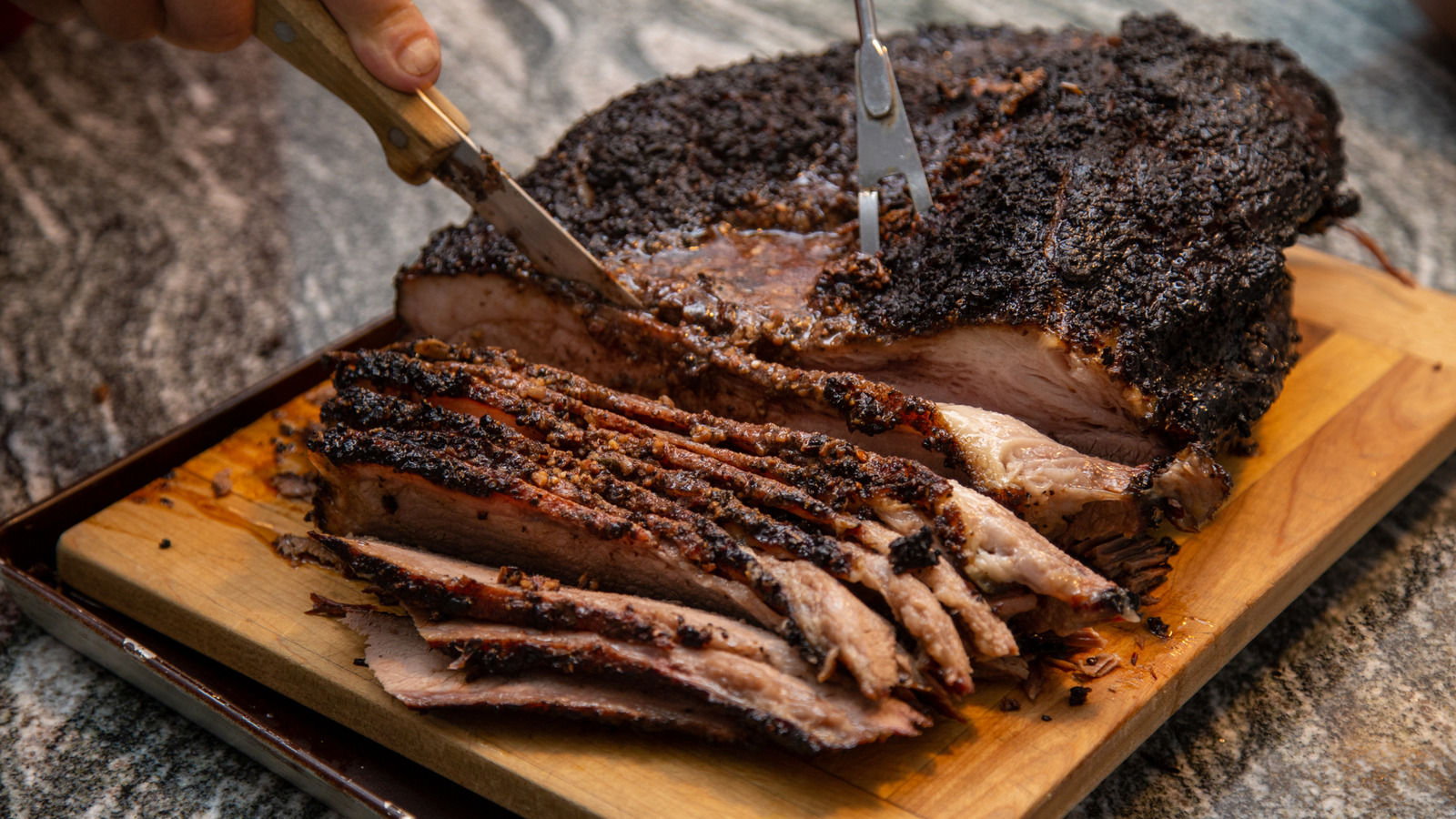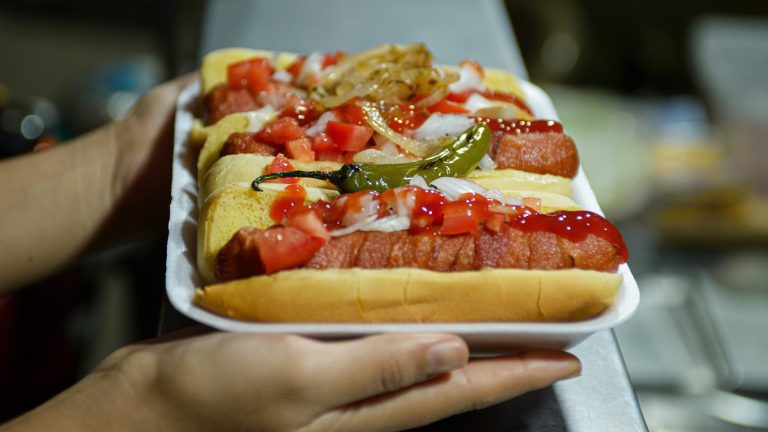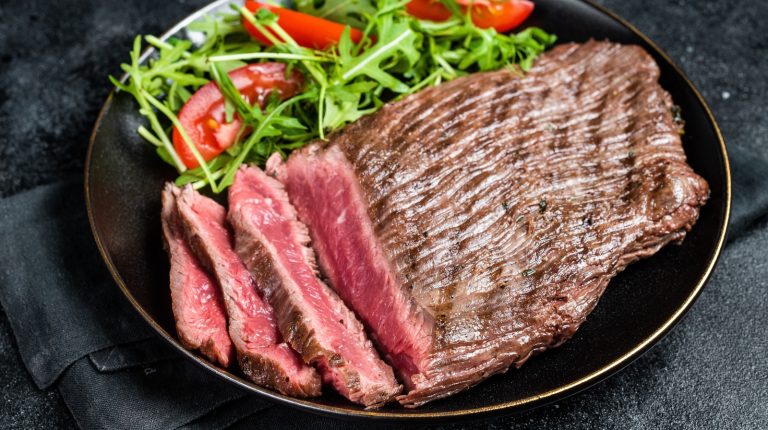Beef brisket is a staple at summer backyard barbecues and holiday feasts, and when perfectly smoked or braised, people can’t get enough of it. It can be tricky, though, to gauge how much brisket to buy so that everyone gets their fill and you still have leftovers (but not too many leftovers). To compensate, you might buy too much brisket, which means spending more than you really need to. We spoke with celebrity chef Robbie Shoults, the third-generation owner of Bear Creek Smokehouse and owner of Marshall Mercantile and High Horse 1898 in Marshall, Texas, and he detailed how much you might pay when choosing the perfect brisket.
“Most good brisket right now is running in the neighborhood of $5 per pound, plus or minus a little bit,” Shoults shared. Five bucks a pound isn’t too pricey, but as Shoults notes, “You may expect to pay more at a quality butcher shop that provides super fresh beef.” When calculating how much brisket to buy, take into account that a raw brisket could shrink by 30% or even as much as half of its original weight. Because of the shrinkage, it’s best to purchase one pound per person of a brisket flat (or half-pound per young child), since you’ll end up with one-half pound of cooked brisket for each guest. A half pound will yield between two and four slices and served with the absolute best sides to eat with brisket, you’re sure to satisfy the heartiest of appetites.
Beware brisket that has too much fat
We’re all about finding ways to save money at a butcher shop, but when it comes to brisket, it pays to buy the best. “If you run into a sale that seems too good to be true, it probably is,” Shoults reveals. “Many times you can find lower-quality briskets at rock-bottom prices, but if I am going to invest 12 to 15 hours in cooking a brisket, I want to start with the best one I can find!” When purchasing brisket, choose beef that’s graded either USDA Choice or Prime and avoid USDA Select and grass-fed beef, which have less fat marbling and won’t be as tender. All brisket has a fat cap, called the “deckle,” that keeps the meat juicy. But a lower-quality brisket has a larger, thicker deckle, which is always trimmed, so you’re paying more for inedible fat rather than for edible beef.
Brisket is one of beef’s primal cuts that’s butchered from the cow’s pectoral muscles, which are divided and sold as the flat and the point. The flat or “first cut” is the horizontal muscle that weighs between 6 and 10 pounds, and its uniform thickness ensures perfect slices. The flats can be more expensive because, as Shoults told us, “They have already been pre-trimmed and the fatty deckle removed.” The point is rounder and thicker, weighs between five to six pounds, and is mostly used for corned beef, barbecued brisket, and pulled beef sandwiches.





